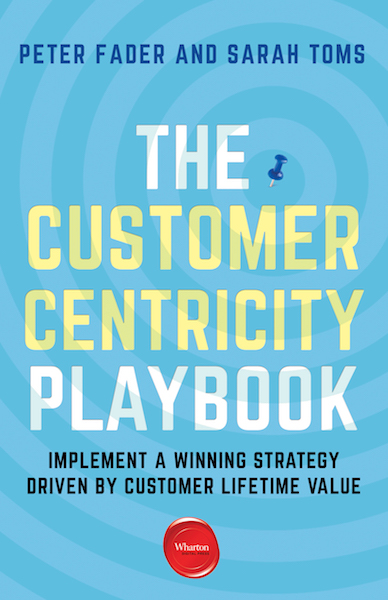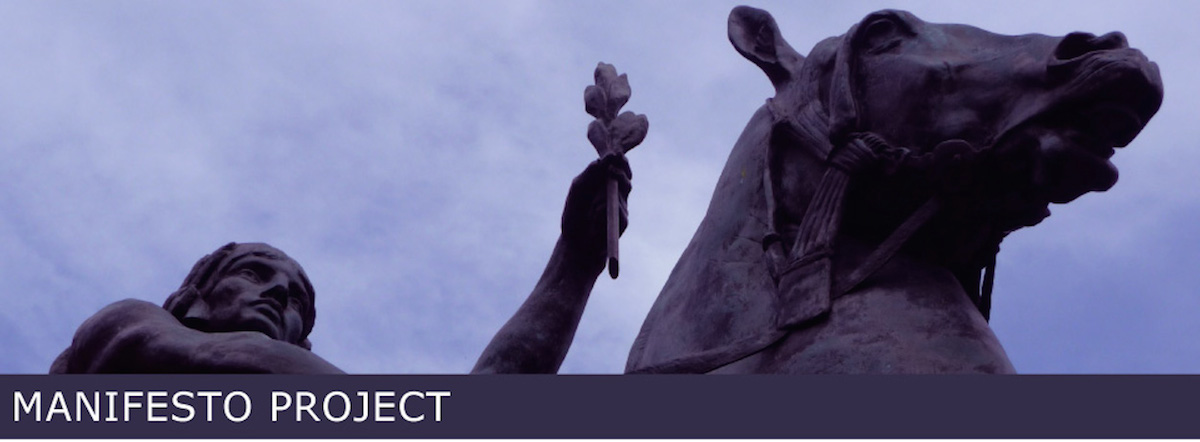Creator
Peter S Fader and Sarah E Toms, authors of The Customer Centricity Playbook: Implementing a winning strategy driven by customer lifetime value
Fader is a Professor of Marketing at the Wharton School of the University of Pennsylvania. Toms is co-founder and Executive Director of Wharton Interactive.
Purpose
Fader and Toms believe that your most value business asset is to understand your best customers. This means treating them as individuals.
They have adapted the Customer Centricity Manifesto from the Manifesto for Agile Software Development, which is the focus of Chapter Six in their book.

Manifesto
Celebrating customer heterogeneity is our mantra.
This tenet of customer centricity is a realistic view of the world, and is one that seeks to capture, understand, and build action in tune with these naturally occurring variances.
Cross functional uses of customer lifetime value (CLV).
A truly customer-centric firm will seek to establish a variety of use cases across the organization that demonstrate the strategic advantages that a focus on CLV (and related predictive analytics) can provide.
Metrics that reflect customer equity.
We want to see firms adopt a broader set of metrics that directly or indirectly reflect customers’ propensities to be acquired, buy repeatedly, maintain the relationship, refer others, respond to the right messages, and so on.
Clear Communications with external stakeholders.
Customer centricity creates a natural alignment to get internal and external stakeholders to agree on metrics that are helpful for day-to-day operational purposes as well as the evaluation of a firm’s long-run health.
Source
The Manifesto: http://customercentricitymanifesto.org
The Book: https://wsp.wharton.upenn.edu/book/customer-centricity-playbook/
Comment
The thing that stands out for me around this manifesto is the language used.
In the field of Neuro-Linguistic Programming (NLP) they identify that some words show a link to our sensory systems. For instance, the words ‘look, hear, feel, touch, taste and smell’ represent the senses of ‘sight, sound, feelings (kinesthetic), gustatory (taste) and olfactory (smell)’.
Other words that don’t fit the senses are known as ‘Auditory Digital’ or non-sensory words. These are concept words such as: system, belief, customer and communication.
Typically, we all have preferences around the words we use. Some people use more ‘visual’ words and others more ‘feeling’ words. Academics tend to use a lot of concept words and this is consistent with this manifesto.
While this is a powerful approach, as with all things, it has its limits.
If your manifesto is just for you, then you can use any words that you like. However, if you want to engage, enrol and invite others to join you in your manifesto journey, then using words that will appeal to a wider audience are worth considering. For example, do you know what the word ‘heterogenity’ means? I had to look it up. (It means ‘being diverse in character’.)
One strategy for this is to have different palettes or different language styles for your manifesto. For example, having a formal palette and a casual one.
Compare this to the simple and casual language in Emily McDowell’s Let’s Get Real manifesto.
The current manifesto by Fader and Toms could be their formal language manifesto. And it may be complemented by a simpler, more casual version such as this:
- Customers come in lots of different shapes and sizes. Celebrate this.
- Give your customers different paths to walk down. Create this.
- Notice the value your customers give you. Measure this.
- Talk with your customers and your team in the same way. Align this.
Consider that you may need to create different versions of your manifesto to appeal to different audiences. This might also include both a visual and a written form.
